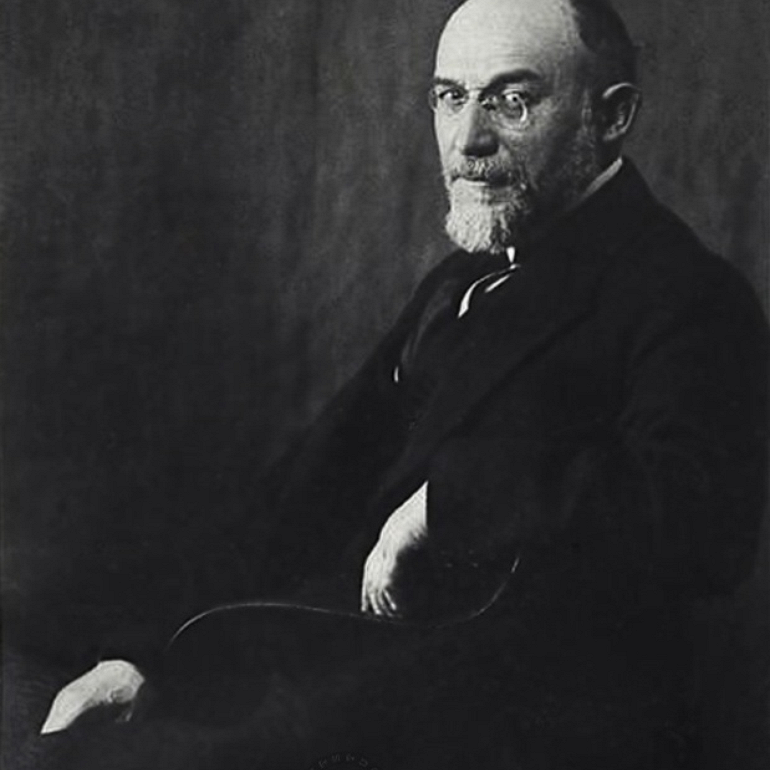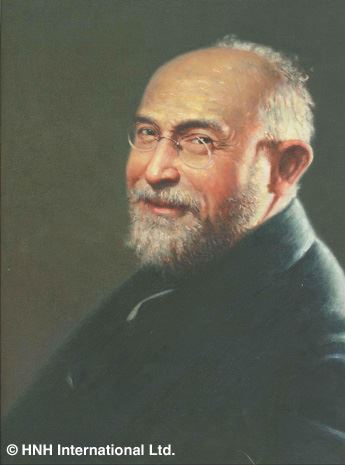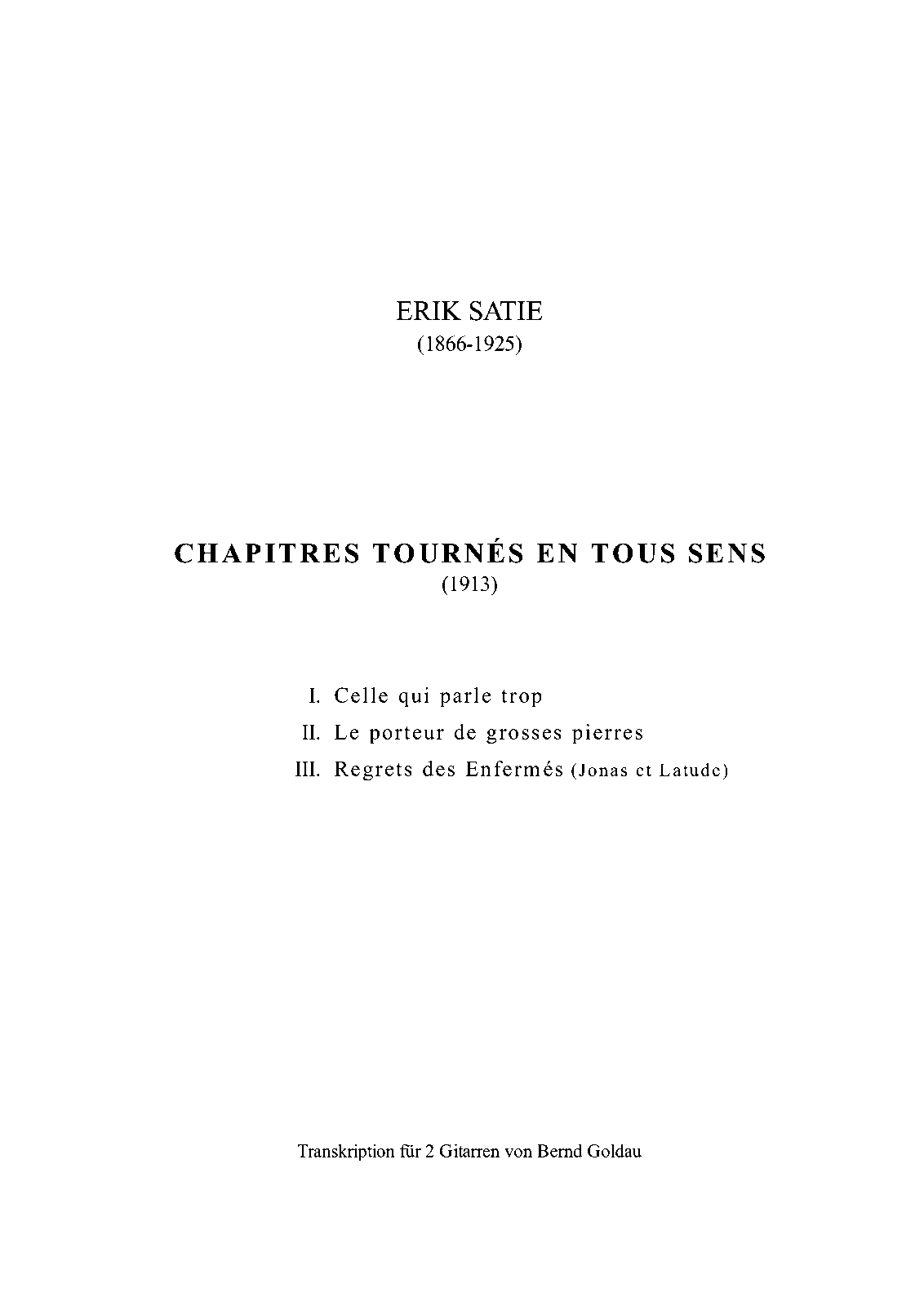

Musique d'ameublement: tenture de cabinet préfectoral, for small orchestra (1923).Carrelage phonique, for flute, clarinet and strings.

Tapisserie en fer forgé, for flute, clarinet, trumpet and strings.Le Bœuf Angora (1901, unfinished arranged for piano by Johny Fritz).Danse, for small orchestra (1890 arranged as movement 6 of 3 Morceaux en forme de poire).Carnet d'Esquisses et de Croquis, some 20 sketches and fragments from 1897 to 1914.Minuet exercises: Profondeur and Songe-creux.Prélude canin from 2 préludes pour un chien.Six Pièces de la période, six pieces from 1906 to 1913:.Musiques intimes et secrètes, three pieces from 1906 to 1913:.These included (but were not limited to) the following collections: Some of Satie's early and/or unpublished works, as well as drafts and exercises, were published in the second half of the 20th century. Rêverie de l'enfance de Pantagruel (1919 arrangement of the first of Trois petites pièces montées).Rag-time Parade (1917, arrangement by Hans Ourdine ).San Bernardo (1913 first version of Españaña from Croquis et agaceries d'un gros bonhomme en bois, published in 2002).

 Le grand singe (c.1909 minuet exercise). Le prisonnier maussade (c.1909 minuet exercise). Petite sonate (1908–9, first movement only). Fâcheux exemple (1908 counterpoint exercise)ĭésespoir agréable, Piano recording Désespoir agréable (1908 counterpoint exercise). Nun ruhen alle Wälder (Lutheran choral harmonised by E.Satie) (1906). Le poisson rêveur ( The Dreamy Fish, music for a tale by Lord Cheminot, alias Latour) (1901). Modéré (1893, possibly part of Messe des pauvres). Fête donnée par des Chevaliers Normands en l'honneur d'une jeune demoiselle (XIe siecle) (c. Leit-motiv du "Panthée" (1891 no instrument specified). Untitled (published posthumously as Première pensée Rose+Croix) (1891). Les trois valses distinguées du précieux dégoûté (1914). Heures séculaires et instantanées (1914). Profiter de ce qu'il a des cors aux pieds pour lui prendre son cerceau. Être jaloux de son camarade qui a une grosse tête. Ce que dit la petite princesse des tulipes. 3 pieces (1913, published as Trois nouvelles enfantines in 1972). Ne bois pas ton chocolat avec tes doigts. L'enfance de Ko-Quo (1913, first published in 1999). Chez le marchand d'or (Venise XIIIe siècle). Vieux sequins et vieilles cuirasses (1913). Danse maigre (à la manière de ces messieurs). Croquis et agaceries d'un gros bonhomme en bois (1913). Veritables Preludes flasques (pour un chien) (1912). Avec camaraderie (originally Sous la futaille). Préludes flasques (pour un chien) (1912). Trois morceaux en forme de poire (1903, 4 hands). Pièces froides (1897, two sets: Airs à faire fuir and Danse de travers ). This article gives the known or approximate date of composition for each work. Many of Satie's works were not published until many years after they were composed, including a considerable number first published posthumously.
Le grand singe (c.1909 minuet exercise). Le prisonnier maussade (c.1909 minuet exercise). Petite sonate (1908–9, first movement only). Fâcheux exemple (1908 counterpoint exercise)ĭésespoir agréable, Piano recording Désespoir agréable (1908 counterpoint exercise). Nun ruhen alle Wälder (Lutheran choral harmonised by E.Satie) (1906). Le poisson rêveur ( The Dreamy Fish, music for a tale by Lord Cheminot, alias Latour) (1901). Modéré (1893, possibly part of Messe des pauvres). Fête donnée par des Chevaliers Normands en l'honneur d'une jeune demoiselle (XIe siecle) (c. Leit-motiv du "Panthée" (1891 no instrument specified). Untitled (published posthumously as Première pensée Rose+Croix) (1891). Les trois valses distinguées du précieux dégoûté (1914). Heures séculaires et instantanées (1914). Profiter de ce qu'il a des cors aux pieds pour lui prendre son cerceau. Être jaloux de son camarade qui a une grosse tête. Ce que dit la petite princesse des tulipes. 3 pieces (1913, published as Trois nouvelles enfantines in 1972). Ne bois pas ton chocolat avec tes doigts. L'enfance de Ko-Quo (1913, first published in 1999). Chez le marchand d'or (Venise XIIIe siècle). Vieux sequins et vieilles cuirasses (1913). Danse maigre (à la manière de ces messieurs). Croquis et agaceries d'un gros bonhomme en bois (1913). Veritables Preludes flasques (pour un chien) (1912). Avec camaraderie (originally Sous la futaille). Préludes flasques (pour un chien) (1912). Trois morceaux en forme de poire (1903, 4 hands). Pièces froides (1897, two sets: Airs à faire fuir and Danse de travers ). This article gives the known or approximate date of composition for each work. Many of Satie's works were not published until many years after they were composed, including a considerable number first published posthumously. #Composer satie series#
If the pieces in a series have distinct titles, for example the 21 pieces in Sports et divertissements, all titles are given. In this list of Erik Satie's musical compositions, those series or sets comprising several pieces (e.g., Gnossienne 1, Gnossienne 2, etc.) with nothing but tempo indications to distinguish the movements by name, are generally given with the number of individual pieces simply stated in square brackets.








 0 kommentar(er)
0 kommentar(er)
